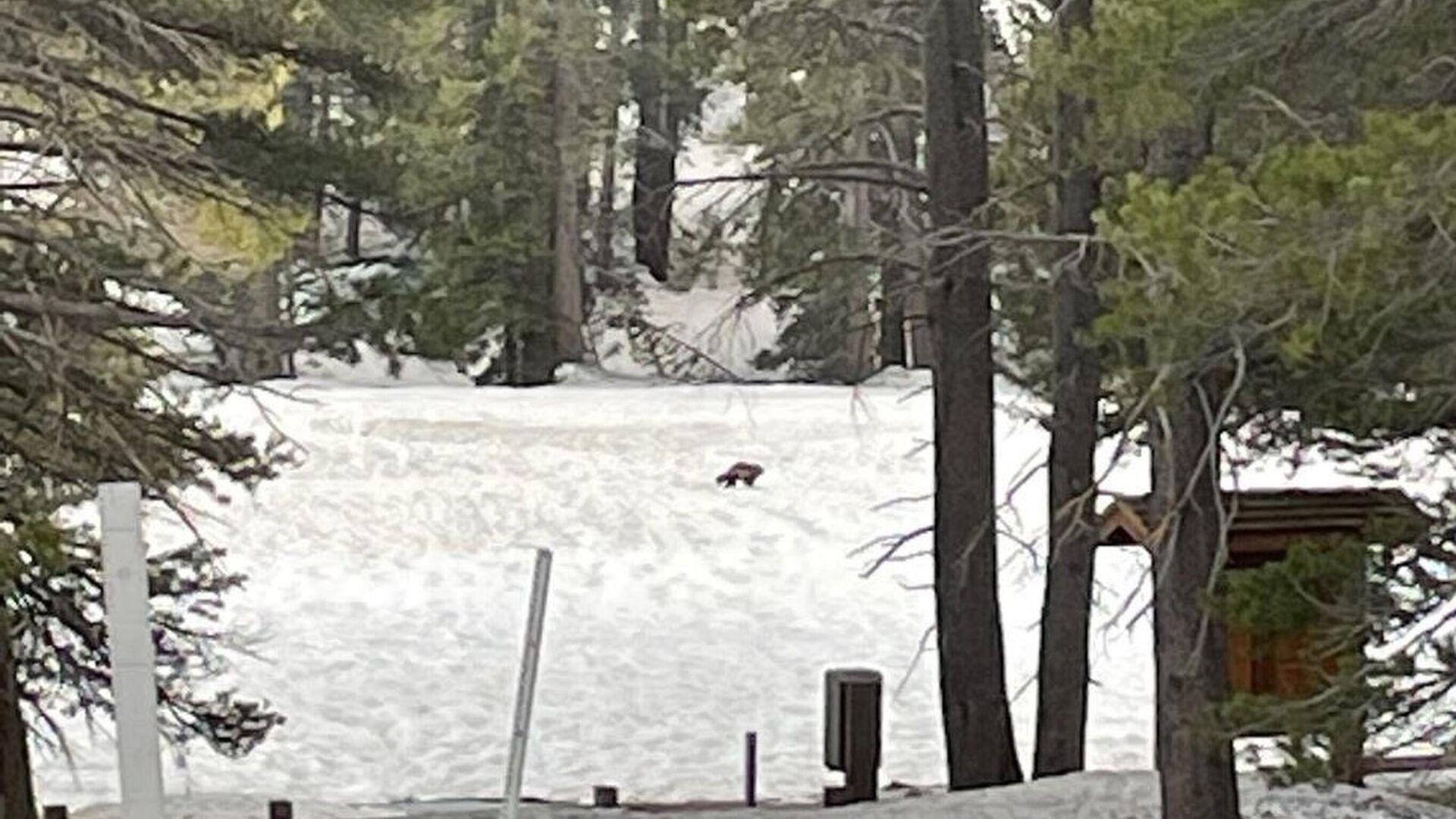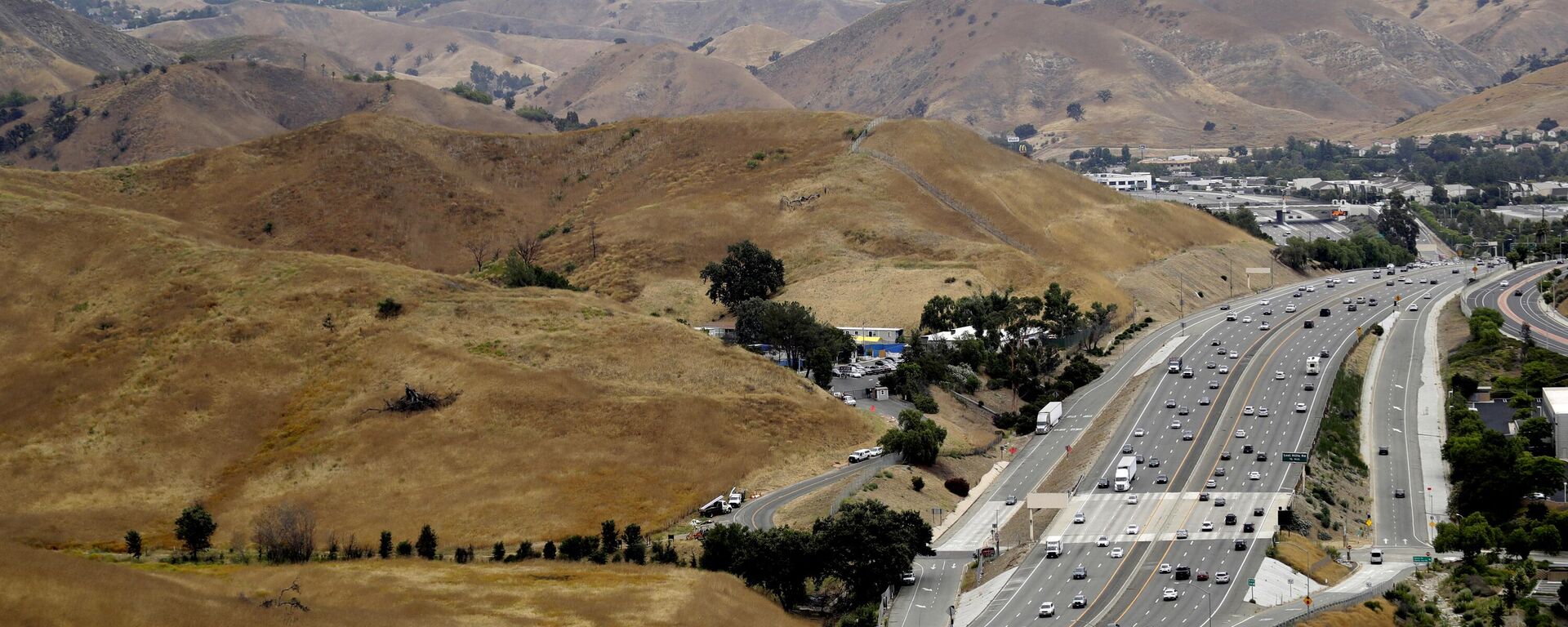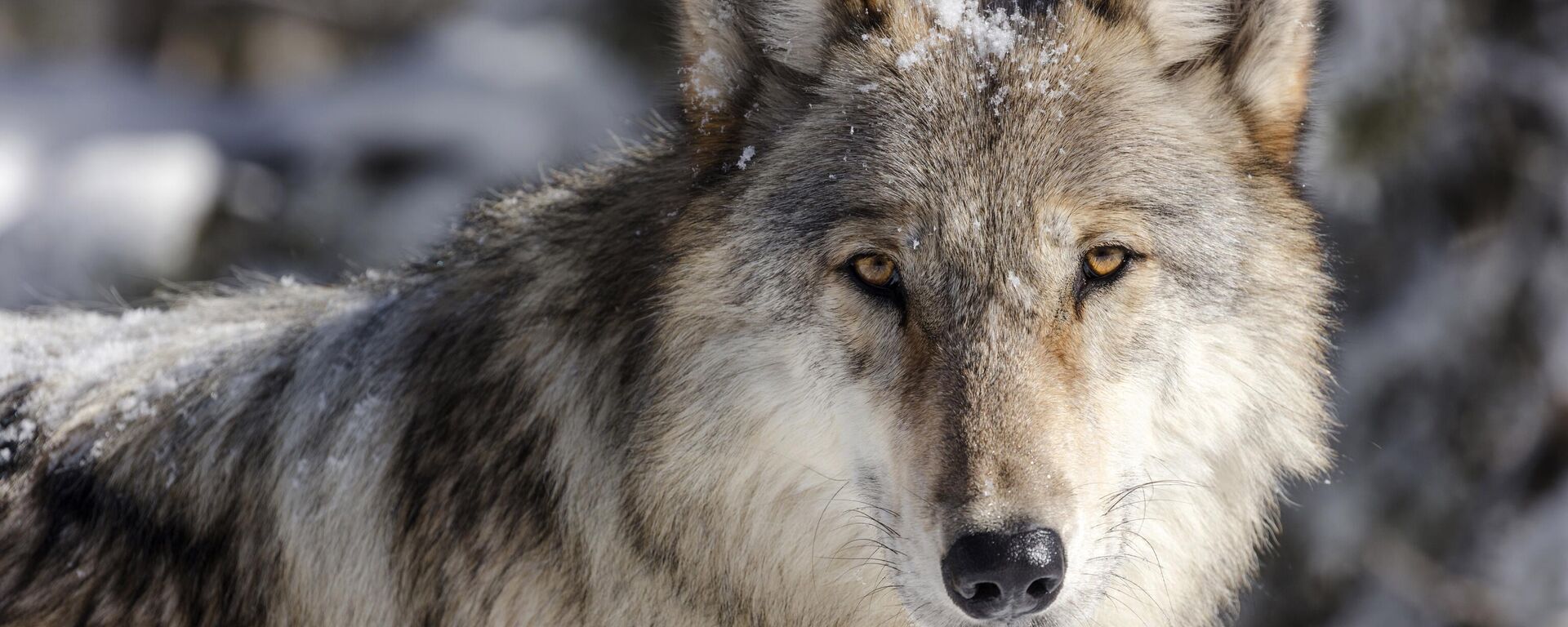https://sputnikglobe.com/20230606/wolverine-spotted-in-california-marks-second-ever-sighting-in-100-years-1110965892.html
Wolverine Spotted in California Marks Second-Ever Sighting in 100 Years
Wolverine Spotted in California Marks Second-Ever Sighting in 100 Years
Sputnik International
In a remarkable occurrence, a wolverine has been spotted three times in the eastern Sierra Nevada region of California, a state where the animal has been virtually extinct for the past century.
2023-06-06T21:04+0000
2023-06-06T21:04+0000
2025-04-07T11:06+0000
beyond politics
us
california
wild animals
animals
viral news
https://cdn1.img.sputnikglobe.com/img/07e7/06/06/1110965736_0:511:2731:2047_1920x0_80_0_0_c2e401a9566f453f9cc57a680fd4cc7a.jpg
In a remarkable occurrence, a wolverine has been spotted three times in the eastern Sierra Nevada region of California, a state where the animal has been virtually extinct for the past century.State wildlife officials reported that wolverines, which are native to California, had dwindled in numbers due to hunting and fur trapping since the gold rush era, though the exact cause of their decline remains unknown.The latest wolverine sighting is presumed to be that of a young male in search of a mate, and has been observed twice in the Inyo National Forest and once in Yosemite National Park.Daniel Gammons, a senior environmental scientist in California's Department of Fish and Wildlife, has explained that male wolverines cover vast territories spanning hundreds of square kilometers, noting the heavy snowfall in the West may have created "habitat bridges" for the wolverine.It is possible that the animal traveled from the Rocky and Cascade mountain ranges or even from as far as Canada or Alaska.Wildlife officials are now endeavoring to obtain a sample of the wolverine's hair or scat for genetic testing. The species, considered the largest terrestrial member of the weasel family, is listed as threatened under the California Endangered Species Act.Previous historical data suggests wolverines experienced significant population declines or local extirpations in the Cascade Range and northern Rocky Mountains in the early 1900s. However, subsequent records from the states of Washington, Oregon, Idaho, Montana and Wyoming indicate a possible reestablishment of wolverine populations in the northwestern regions after a period of decline.During the 1960s and 1970s, wolverines started appearing in low-elevation, non-forested habitats in eastern Washington and Oregon. Although there is no current evidence of wolverines in eastern Washington, their presence in northeast Oregon was documented in 2011. The reasons behind their appearance in previously unoccupied areas during that time period remain unclear.Some researchers speculate wolverine populations were reestablished in Montana through dispersals from Canada during the mid-1900s, leading to an expansion in numbers and distribution in the northern Rocky Mountains. Consequently, the anomalous wolverine records in eastern Washington and Oregon likely represent failed attempts by individuals from Canada or Montana to establish resident populations.
https://sputnikglobe.com/20220326/california-to-build-huge-wildlife-crossing-over-10-lanes-of-freeway-1094209443.html
https://sputnikglobe.com/20230428/this-brain-hijacking-parasite-drives-wolves-toward-pack-leadership-1109920539.html
Sputnik International
feedback@sputniknews.com
+74956456601
MIA „Rossiya Segodnya“
2023
News
en_EN
Sputnik International
feedback@sputniknews.com
+74956456601
MIA „Rossiya Segodnya“
Sputnik International
feedback@sputniknews.com
+74956456601
MIA „Rossiya Segodnya“
us california, american wildlife, wild wolverine, yosemite national park, inyo national forest, tahoe national forest, us wolverine history
us california, american wildlife, wild wolverine, yosemite national park, inyo national forest, tahoe national forest, us wolverine history
Wolverine Spotted in California Marks Second-Ever Sighting in 100 Years
21:04 GMT 06.06.2023 (Updated: 11:06 GMT 07.04.2025) The sighting of a wolverine from 2008 to 2018, primarily in the Tahoe National Forest, was the only previous record of the species in California. However, the recent wolverine sighting is believed to be that of a different specimen, as the animal's lifespan is typically 12 to 13 years.
In a remarkable occurrence, a wolverine has been spotted three times in the eastern Sierra Nevada region of California, a state where the animal has been virtually extinct for the past century.
State wildlife officials reported that wolverines, which are native to California, had dwindled in numbers due to hunting and fur trapping since the gold rush era, though the exact cause of their decline remains unknown.
The latest wolverine sighting is presumed to be that of a young male in search of a mate, and has been observed twice in the Inyo National Forest and once in Yosemite National Park.
Daniel Gammons, a senior environmental scientist in California's Department of Fish and Wildlife, has explained that male wolverines cover vast territories spanning hundreds of square kilometers, noting the heavy snowfall in the West may have created "habitat bridges" for the wolverine.
It is possible that the animal traveled from the Rocky and Cascade mountain ranges or even from as far as Canada or Alaska.
Wildlife officials are now endeavoring to obtain a sample of the wolverine's hair or scat for genetic testing. The species, considered the largest terrestrial member of the weasel family, is listed as threatened under the California Endangered Species Act.
Previous historical data suggests wolverines experienced significant population declines or local extirpations in the Cascade Range and northern Rocky Mountains in the early 1900s. However, subsequent records from the states of Washington, Oregon, Idaho, Montana and Wyoming indicate a possible reestablishment of wolverine populations in the northwestern regions after a period of decline.
During the 1960s and 1970s, wolverines started appearing in low-elevation, non-forested habitats in eastern Washington and Oregon. Although there is no current evidence of wolverines in eastern Washington, their presence in northeast Oregon was documented in 2011. The reasons behind their appearance in previously unoccupied areas during that time period remain unclear.
Some researchers speculate wolverine populations were reestablished in Montana through dispersals from Canada during the mid-1900s, leading to an expansion in numbers and distribution in the northern Rocky Mountains. Consequently, the anomalous wolverine records in eastern Washington and Oregon likely represent failed attempts by individuals from Canada or Montana to establish resident populations.




